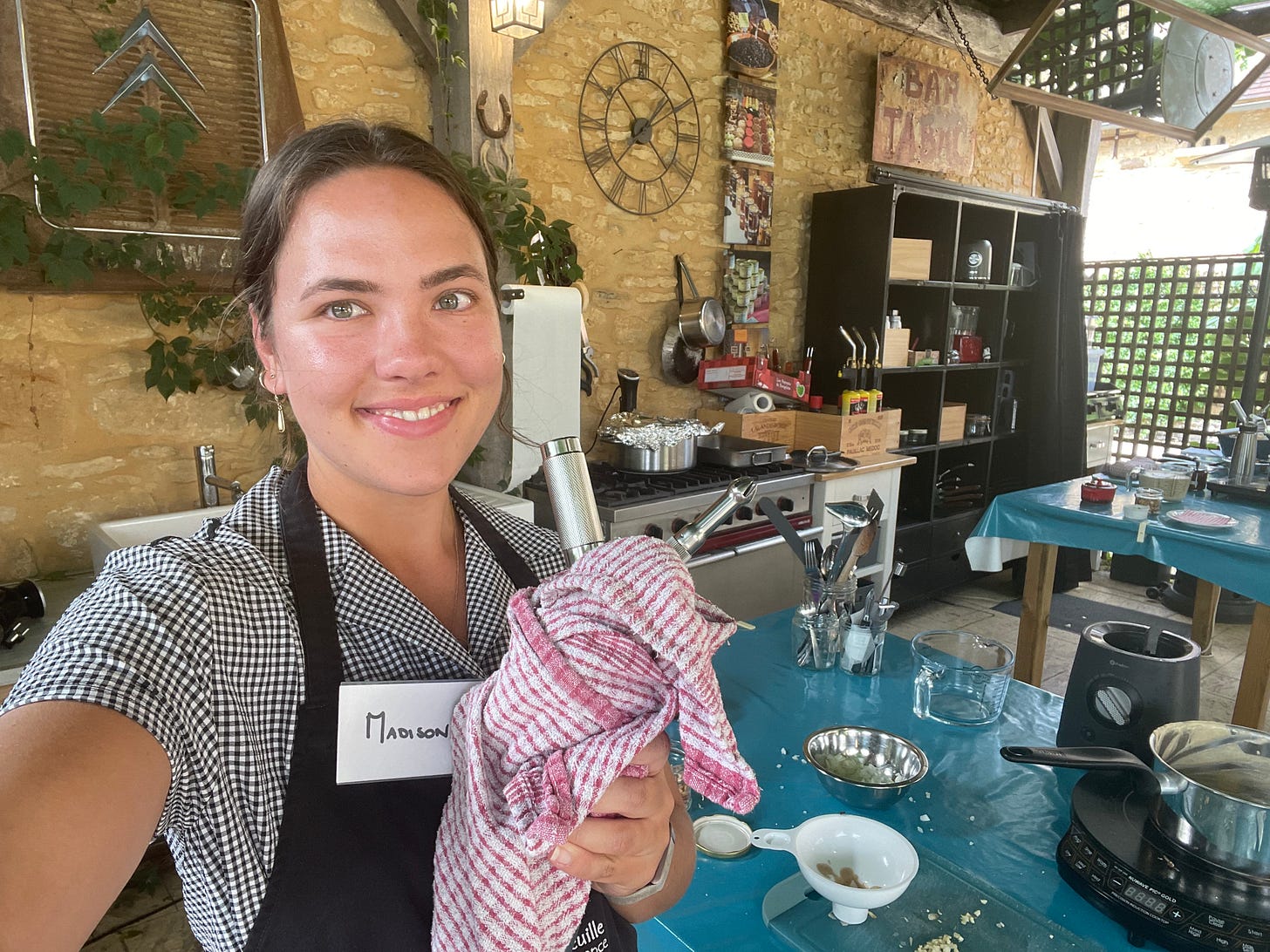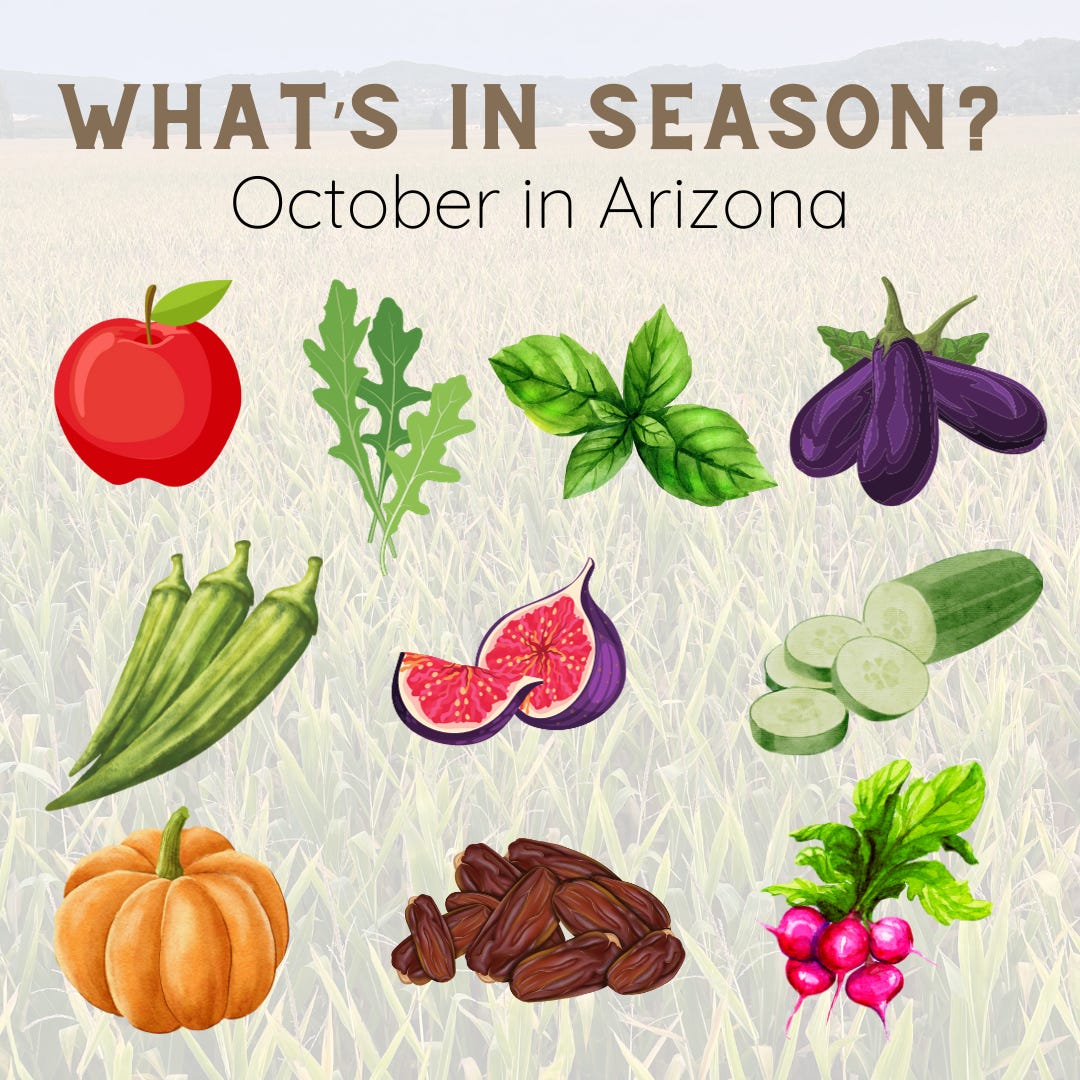Cooking classes are one of my favorite travel activities. You learn from locals how to make regional dishes using all of the traditional techniques you wouldn’t learn about from an online recipe. It’s hands down the best way to learn about a culture and its people.
Last October, while in Greece, I spent a day at ELaiolithos with the owner Helen learning to make tzatziki and stuffed vegetables. All of the ingredients used were grown or made within 5 km of her hotel.
The yogurt was made with fresh sheep’s milk from her brother, a shepherd. The vegetables were grown in her sister’s garden. The olive oil was harvested and processed by her friend down the hill.
When I find a cooking class, I don’t find just any cooking class. I find ones that are focused on local, seasonal ingredients. I want to learn from the best- people who are in love with the ingredients that grow around them.
When I traveled to the Dordogne region of France, this was no exception. The chef behind Cook Dordogne (the local cooking school) boasted about the region’s black truffles, morels picked every year by his neighbor, foie gras that the region is known for, and the walnut oil that comes from his friend’s orchard.
He truly appreciated the ingredients around him, educating us about the walnut oil that is so high in antioxidants but hasn’t been commercialized because of its short shelf life.
He let us taste the raw honey from the bees that exclusively pollinate the sweet chestnut trees.
He explained to us how the foie gras production, which is indeed cruel to the animals, is completely transparent about its process and how the geese live.
Unlike in America, where the meat industry does everything it can to keep the living conditions of its animals top secret, foie gras producers welcome whoever wants to see with open arms. They are 100% transparent with their process, which I appreciate. People deserve to know what they are eating and make an informed choice!
The Dordogne region is particularly known for producing black truffles. Yes, the $327 per kilo, prized truffles. However, the season for this is in January and February.
I fully expected to be bringing back a suitcase full of black truffle everything. Black truffle-infused oils, black truffle salts, dried black truffles, you name it. But the French do things a bit differently.
Instead of trying to make them last throughout the year, they enjoy them during the season they are harvested. Once the black truffles are gone, they are gone. Onto the next ingredient!
Of course, there are some exceptions to this. You’ll find the occasional black-truffle-infused sunflower oil at a tourist gift shop. But we don’t want these low-quality products anyway.
My entire experience at Cook Dordogne really had me thinking about seasonal ingredients and the art of celebrating them. Our ancestors have been doing this for thousands of years. It wasn’t until recently that we had constant access to bananas from South America, perfectly canned tomato sauce, bulk amounts of walnuts, and coffee beans from Kenya.
Why our ancestors ate seasonally
Our ancestors ate and cooked what was available to them. If it didn’t live or grow within a few miles from where they lived, they probably didn’t eat it. They sure as heck weren’t eating tropical fruits in the middle of a North American winter.
While many people like to say they had a set way of eating, the truth is that it depended on where they lived. Seasons are different everywhere, as is the plant and animal life.
We can’t group all of our ancestors into eating the same exact things. However, we do know that they only ate locally. This was the key to their survival. The foods around them supported them at the times they needed it most, allowing them to evolve.
I have no doubt that they celebrated bountiful harvests in the fall and the beginning of the growing season in the spring. This meant food was about to be more readily available than it was in the colder months!
How the French still celebrate food
I learned that every spring, the inhabitants of Dordogne celebrate a crop similar to garlic, or baby spring onions. When the onions are ready to be picked, people come together to eat them, cook them in duck fat and butter, and drink beer.
They throw an entire party for the harvest of this crop! The best part? They come together to enjoy it and then once it’s gone, it’s gone. They won’t have it again until the crop is ready to be harvested next year.
During the time that crop is available, everyone is able to really appreciate it. The food is limited and only comes once a year, making it something to be celebrated. It’s a time people can look forward to, saving some of their favorite recipes to make when the onion is in season.
And apparently, it isn’t just the French that do this.
Those in Barcelona celebrate calçots (a large type of green onion) by holding calçotadas (winter BBQs with lots of onions) every January/February.
Sant Andreu de Llavaneres, a town in Spain, celebrates the garrofal, a prized variety of pea that has been growing in the region since the 17th century. Every April they hold a feast where they invite people to taste dishes made with this star ingredient.
How modern-day Americans have lost appreciation for food
I’ll go ahead and say it- us Americans are entitled (myself included). We think every food should be available to us every time of the year. If we want something, we want it now.
Even today at the farmer’s market, the stands were looking a bit sparse since we are just now beginning to cool down in Arizona. Sebastian looks at me and says, “They don’t have much- let’s just go to Sprouts”.
What if our ancestors had said that? They never had a choice of what to eat and when. They just ate whatever they could find!
What you can do about it
I get it- sometimes you want tomatoes in the middle of the winter or arugula in the summer. While these crops aren’t in season these times of year, they are available in the grocery store. Maybe we have a craving or want to make a certain recipe.
But, most of the time, you really should try to eat with the seasons. This can easily be done if you do your grocery shopping at the farmer’s market. Buy what you see around you. Plan your meals and recipes around what’s available.
Instead of going to the grocery store with a list of items from many different seasons, try to see what’s in season locally and buy that instead.
You don’t have to be perfect- but try to be more conscious about what you are purchasing and when. Heck, most Americans probably don’t know what season most vegetables and fruits grow in. Educating yourself on the seasons of different foods would be a great place to start.
In case you’re curious, here’s what is in season in Arizona right now:
By shopping seasonally, you’re supporting the livelihoods of people in your own community. You are also getting more nutritious foods that haven’t traveled thousands of miles to end up on your plate. Not to mention, it will taste way better because it’s local and not mass-produced to be shipped all over the world.
As humans, we are meant to eat with the seasons- it’s the healthiest way we can eat! Our bodies function well off the foods available during the season we are in.
For example, fruits are meant to fatten us up to help us survive a harsh winter. Even the greens that grow in winter have a higher sugar content to help us make it to summer.
Fish were smoked and eaten in harsh winter climates for their high amount of fat (watch Alone- they can’t survive without fish). Animals were hunted for hearty sources of protein. Fat and protein helped them outlast the winter.
Every food serves a purpose. Mother Nature makes no mistakes- there’s a reason foods are available when they are. You just need to be more conscious and connected to realize this.
Madison






Madison, love this! I wrote my “manifesto” on seasonal eating here: https://cowwedoin.substack.com/p/on-taking-a-seasonal-seven
I’ve also taken to lately calling it “radical eating” — because doing so is a radical shift for how most people eat today. Ironically, though, it’s really taking us “back to our roots” in how we eat. My next week of radical eating will be later this month — hope you will join me!
PS — My wife and I did a cooking class in Greece on our honeymoon, and made the same recipes. We still make the tzatziki the same way today.